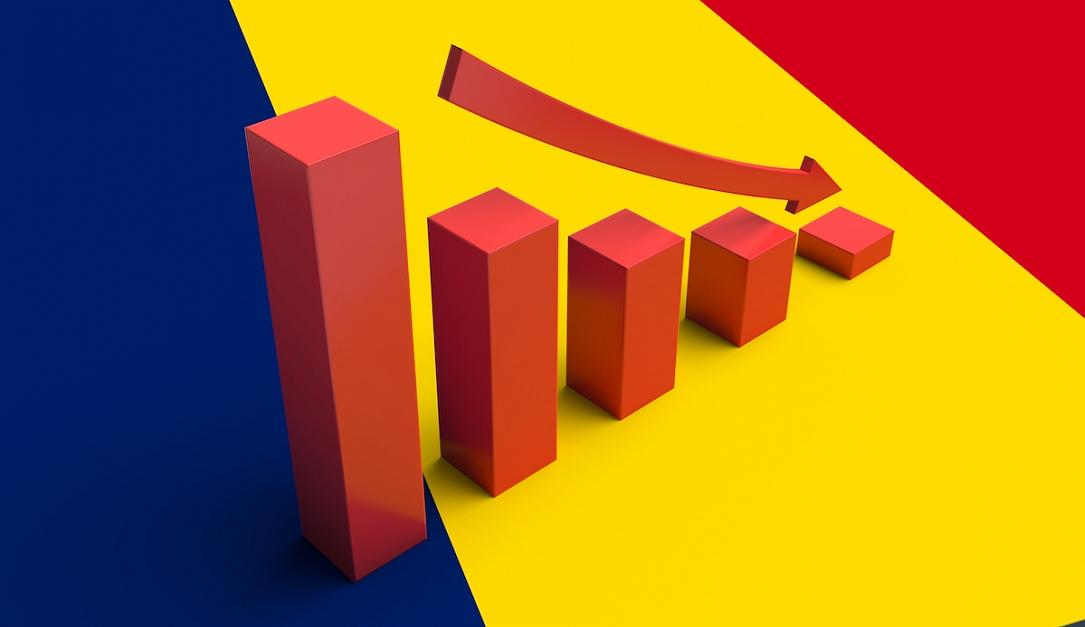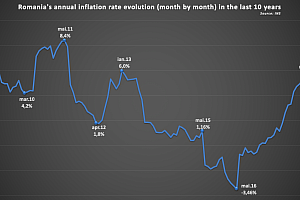Romania’s statistics office confirms economic slowdown in 2018

Romania’s statistics office INS confirmed the country’s GDP growth eased to 4.1% in 2018 from 7% in 2017. In the fourth quarter, the annual growth rate remained in line with the year’s average of 4.1% year-on-year.
On the income side, industry (23.7% of GDP) contributed one percentage point (pp) to the entire year’s growth rate, while the services sector (18.3% of GDP) added another 0.7pp. The Information and Technology sector, despite its still low share in total GDP (5.2%), made an impressive 0.4pp contribution to the overall growth thanks to robust 7.0% advance of the value added generated.
On the expenditure side, internal consumption contributed 3.9pp to the GDP growth in the year, mainly driven by the households’ direct consumption (3.3pp contribution).
The gross fix capital formation made a negative contribution (-0.7pp) despite the significant inventory build-up that had a robust 2.7pp contribution to the GDP growth in 2018. In other words, 2.8pp of the 4.1% GDP growth in 2018 came from the increase in inventory (as opposed to consumption, investments or exports). The gross fix capital formation (the increase in productive capacities) was 3.2% lower, at comparable prices, than in 2017. The inventory cycle was not showing signs of reversal in Q4, when the contribution of the inventory build-up was 2.6pp to the 4.1% year-on-year growth.
When it comes to the external sector, exports increased by 4.7% year-on-year in 2018 (comparable prices) while imports soared by 8.6% year-on-year.
"Investment data has again disappointed, while the unusually high contribution of stock changes for the third consecutive quarter raises even more concerns about the structure of growth," said Dorina Ilasco, an analyst at BCR, quoted by Profit.ro.
"The data shows the limitations of the consumption-driven growth model, which also left deep scars on the external position, with net exports having the largest negative contribution to GDP growth after 2007. Unbalanced public spending is also reflected in the negative contribution of -0.7pp to increase investment. With a fiscal space exhausted on wage growth and social benefits, there is little room for a fiscal stimulus to support investment," noted Ciprian Dascălu, chief economist at ING Bank Romania.
editor@romania-insider.com
(Photo source: Shutterstock)













